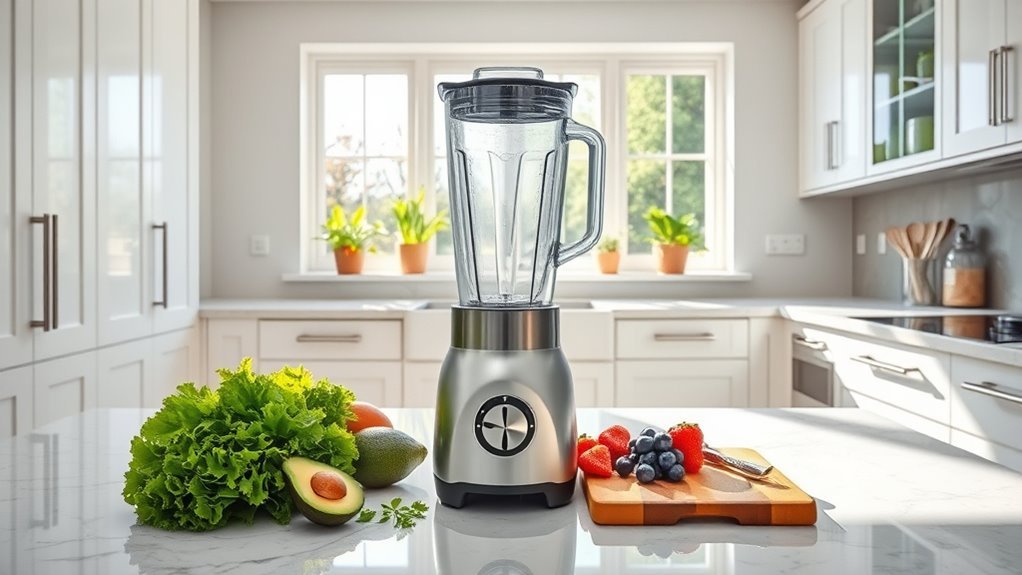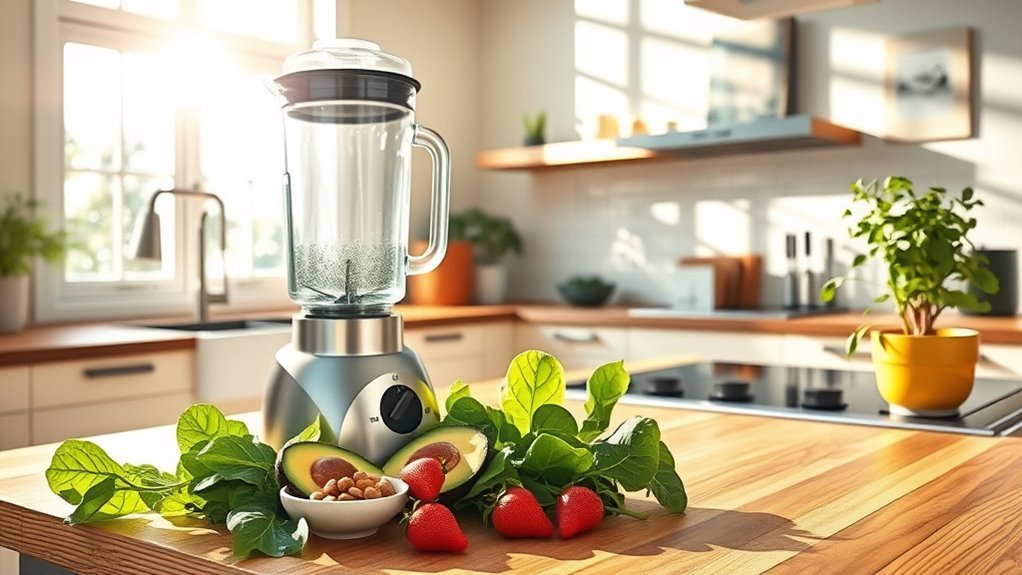We’ve cracked the code on keeping ingredients from sticking in your mixer with these three game-changing tips. First, bring butter and eggs to room temperature before mixing – cold ingredients are notorious troublemakers. Second, scrape down those bowl sides frequently with a spatula to catch stubborn bits. Third, perform the KitchenAid Dime Test to optimize beater height. Master these basics, and you’ll reveal even more pro-level mixing secrets.
Essential Prep Steps for a Clean Mix

While many bakers dive straight into mixing, proper preparation is the make-or-break step for avoiding sticky messes.
Let’s nail down the essentials for your stand mixers to perform flawlessly.
First, bring butter and eggs to room temperature – cold ingredients are a recipe for disaster.
Before firing up that dough hook for bread dough, spray a non-stick surface or dust with flour to prevent sticking.
We’ll gradually add dry ingredients to wet ones, not the other way around. Trust us on this.
Don’t skip the KitchenAid Dime Test to optimize your beater height – it’s vital for mixing efficiency.
And remember: scrape down the bowl frequently. Those stubborn bits clinging to the sides won’t mix themselves.
These prep steps aren’t optional – they’re your insurance policy against a sticky situation. Additionally, using high-performance blenders can enhance your mixing experience by ensuring a smoother texture for your batters and doughs.
Smart Techniques During Operation
Once you’ve nailed the prep work, it’s time to master the actual mixing techniques.
We’ll prevent sticking in your KitchenAid stand mixer by taking control during operation. Start with a non-stick surface or lightly flour your work area. Regular bowl scraping with a spatula guarantees thorough ingredient incorporation and effective mixing.
- Adjust mixer height using the KitchenAid Dime Test – it’s essential for preventing ingredients from clinging to bowl sides.
- Use room temperature ingredients for smoother blending and reduced sticking to mixer components.
- Keep a wet dough scraper handy to manage sticky dough and quickly dislodge it from the hook.
High-performance blenders, which have motor power exceeding 1,000 watts, can also enhance food preparation efficiency, ensuring even better mixing results.
Remember to scrape the bowl frequently during mixing. This simple step prevents ingredient buildup and guarantees everything blends perfectly.
Your mixer will thank you with consistently smooth, stick-free results.
Proper Bowl and Attachment Care

Before diving into any mixing project, let’s tackle proper bowl and attachment care – it’s the foundation of stick-free success. Clean, dry equipment isn’t just a suggestion; it’s your first defense against stubborn food sticking to surfaces. We’re talking spotless mixer bowls and attachments before every use.
Let’s get serious about maintenance. We’ll check attachment fit and height regularly – no ingredients left behind in those bowl corners.
For dough work, we’re switching to silicone or non-stick dough hooks. Trust us, your arms will thank you.
And don’t skip those bowl inspections – scratches aren’t just cosmetic, they’re stick-magnets waiting to ruin your mix. Keep that manual handy and follow those care instructions religiously.
Well-maintained equipment is the secret to consistently perfect results.
Frequently Asked Questions
Do You Need to Lubricate a Kitchenaid Mixer?
We don’t need to lubricate KitchenAid mixers as they’re pre-lubricated during manufacturing. For ideal performance, focus on proper cleaning and maintenance instead of adding oils or greases to the appliance.
How Do I Keep Flour From Flying in My Kitchenaid Mixer?
We’ll prevent flying flour by using low mixing speeds, adding measured amounts gradually, and using a cover shield. With the right bowl size and paddle attachment, we’ll maintain proper dough consistency.
How Do You Unstick a Mixer?
We’ve all faced stubborn dough on mixers. Let’s tilt the bowl slightly, boost speed briefly to fling dough off, or oil the hook. For persistent sticking, use a scraper or let dough rest.
How to Keep a Mixer From Splattering?
We’ll prevent splattering by starting at low mixer speed, using a splash guard, adjusting bowl height properly, and adding ingredients gradually. Choose appropriate attachments and maintain steady mixing technique throughout your recipe.

